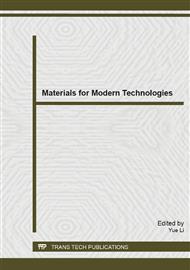p.118
p.125
p.131
p.137
p.142
p.148
p.153
p.159
p.167
Recent Development of Biomass Fast Pyrolysis Technology and Bio-Oil Upgrading: An Overview
Abstract:
The increasing demand of energy has led to the development of renewable energy in order to mitigate the dependency of fossil fuels. Fast pyrolysis of biomass is one of the most anticipated renewable energy technologies since it has a huge potential to become the efficient, environmentally sustainable, and cost effective technology for energy. Fast pyrolysis process produces liquid bio-oil as a main product, along with solid char and combustible gas. Bio-oil can be utilized for heat and power generation as well as it can be used as a feedstock for pure chemicals production. Over the last decades, numerous researches have been conducted in order to develop the process in terms of reactor design and process optimization in order to achieve the high yield of liquid with high organics and less water content. The aim of this review is to provide the state of the art on fast pyrolysis of biomass with some suggestions presented on upgrading the bio-oil. Based on the recent reactor configurations, current status of biomass fast pyrolysis in commercial scale around the world, the fuel and chemical characteristic of bio-oil compared to the conventional fossil fuels, and the potential application of bio-oil in the future, some recommendations are proposed.
Info:
Periodical:
Pages:
142-147
Citation:
Online since:
April 2014
Authors:
Keywords:
Price:
Сopyright:
© 2014 Trans Tech Publications Ltd. All Rights Reserved
Share:
Citation:


